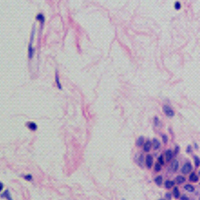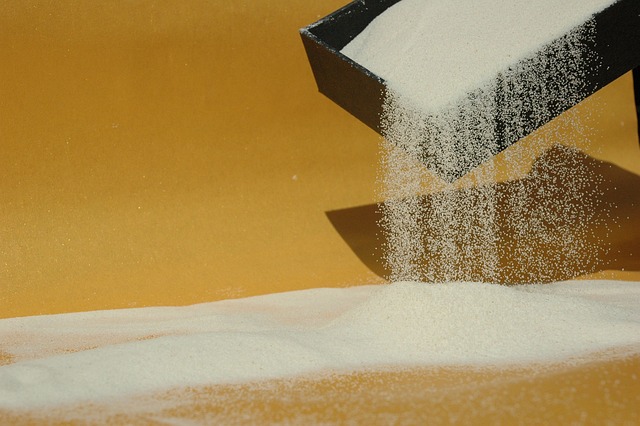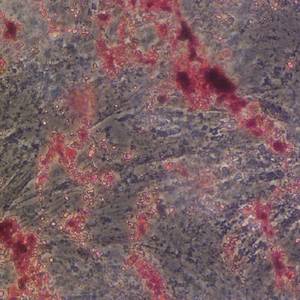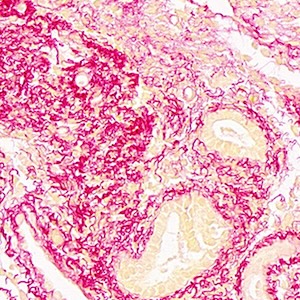Astragalus Ⅳ ameliorates the dry eye injury in rabbit model via MUC1-ErbB1 pathway

Submitted: 11 November 2020
Accepted: 18 February 2021
Published: 1 April 2021
Accepted: 18 February 2021
Abstract Views: 1151
PDF: 677
HTML: 13
HTML: 13
Publisher's note
All claims expressed in this article are solely those of the authors and do not necessarily represent those of their affiliated organizations, or those of the publisher, the editors and the reviewers. Any product that may be evaluated in this article or claim that may be made by its manufacturer is not guaranteed or endorsed by the publisher.
All claims expressed in this article are solely those of the authors and do not necessarily represent those of their affiliated organizations, or those of the publisher, the editors and the reviewers. Any product that may be evaluated in this article or claim that may be made by its manufacturer is not guaranteed or endorsed by the publisher.
Similar Articles
- D. Fanni, N. Iacovidou, A. Locci, C. Gerosa, S. Nemolato, P. Van Eyken, G. Monga, S. Mellou, G. Faa, V. Fanos, MUC1 marks collecting tubules, renal vesicles, comma- and S-shaped bodies in human developing kidney , European Journal of Histochemistry: Vol. 56 No. 4 (2012)
- E. Lacunza, V. Ferretti, C. Barbeito, A. Segal-Eiras, M. V. Croce, Immunohistochemical evidence of Muc1 expression during rat embryonic development , European Journal of Histochemistry: Vol. 54 No. 4 (2010)
- Chunlin Ye, Bin Xu, Jie Yang, Yunkun Liu, Zhikai Zeng, Lingchun Xia, Quanjin Li, Guowen Zou, Mucin1 relieves acute lung injury by inhibiting inflammation and oxidative stress , European Journal of Histochemistry: Vol. 65 No. 4 (2021)
- Yingzhuo Guo, Hua Wang, Sodium hyaluronate promotes proliferation, autophagy, and migration of corneal epithelial cells by downregulating miR-18a in the course of corneal epithelial injury , European Journal of Histochemistry: Vol. 67 No. 2 (2023)
- Shicheng Jiao, Lijun Deng, Mu Niu, Jie Yang, Restorative effects of camellia oil on the skin-barrier function in a model of DNCB-induced atopic dermatitis , European Journal of Histochemistry: Vol. 69 No. 1 (2025)
- Matias Garrido, Camila Escobar, Constanza Zamora, Carolina Rejas, Juan Varas, Mario Párraga, Sebastián San Martin, Sandra Montedonico, Bile duct ligature in young rats: A revisited animal model for biliary atresia , European Journal of Histochemistry: Vol. 61 No. 3 (2017)
- T. Petr, V. Å mÃd, J. Å mÃdová, H. Hůlková, M. Jirkovská, M. Elleder, L. Muchová, L. Vitek, F. Å mÃd, Histochemical detection of GM1 ganglioside using cholera toxin-B subunit. Evaluation of critical factors optimal for in situ detection with special emphasis to acetone pre-extraction , European Journal of Histochemistry: Vol. 54 No. 2 (2010)
- Yao Le, Zhijun Wang, Qian Zhang, Ling Miao, Xiaohong Wang, Guorong Han, Study on the mechanism of Shenling Baizhu powder on the pathogenesis of pregnancy complicated with non-alcoholic fatty liver, based on PI3K/AKT/mTOR signal pathway , European Journal of Histochemistry: Vol. 68 No. 3 (2024)
- X. Xu, S. Guan, B. He, J. Wang, Active role of the predecidual-like zone in endometrial shedding in a mouse menstrual-like model , European Journal of Histochemistry: Vol. 57 No. 3 (2013)
- G. Scarsella, M. Nebbioso, S. Stefanini, N. Pescosolido, Degenerative effects in rat eyes after experimental ocular hypertension , European Journal of Histochemistry: Vol. 56 No. 4 (2012)
You may also start an advanced similarity search for this article.

 https://doi.org/10.4081/ejh.2021.3198
https://doi.org/10.4081/ejh.2021.3198















